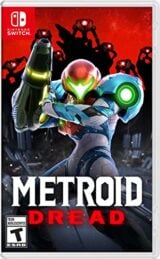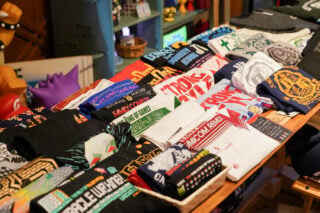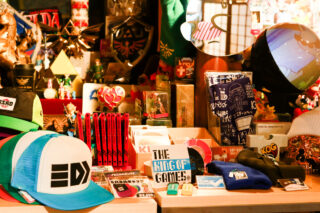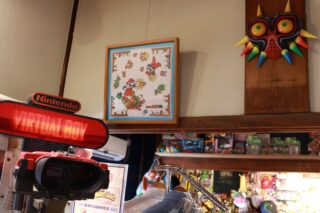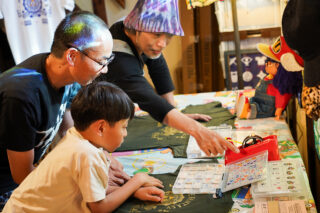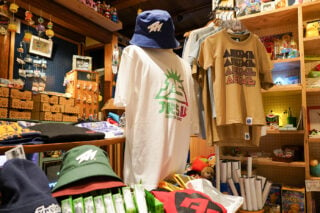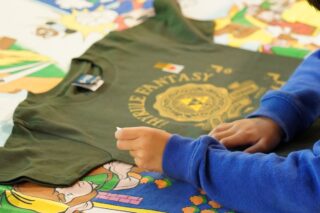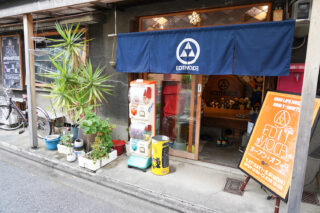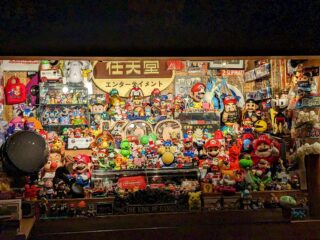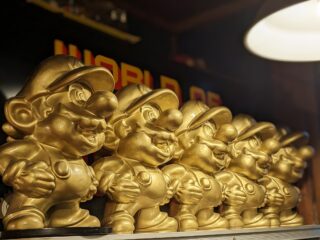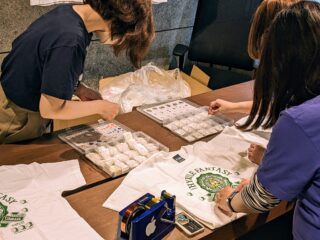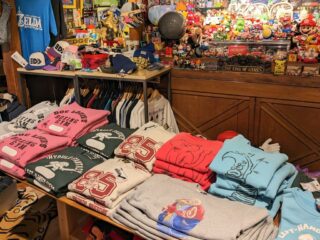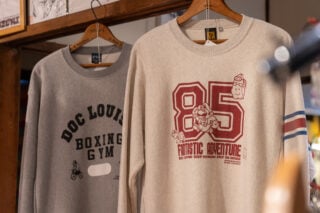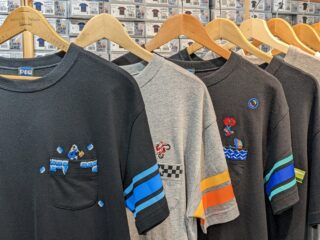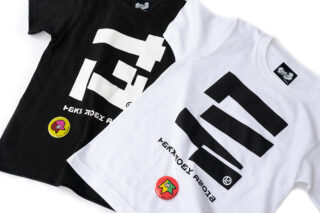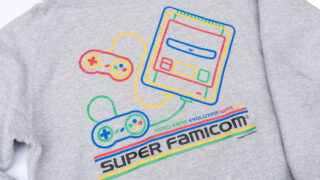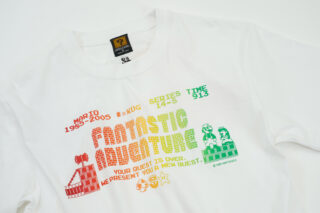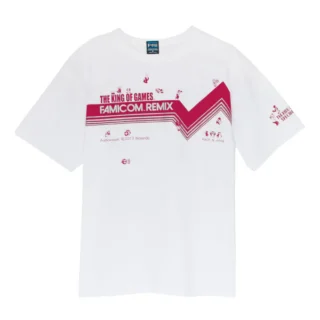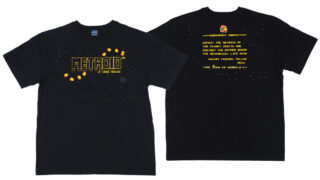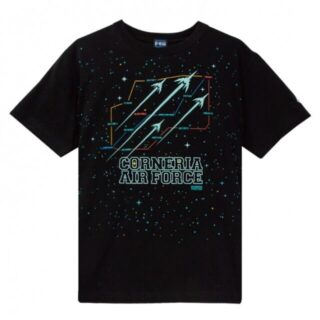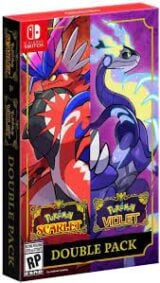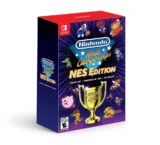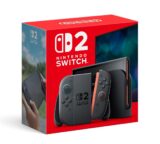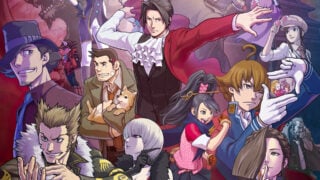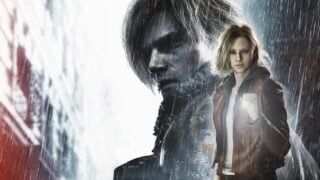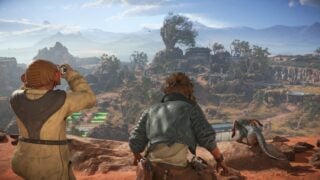Since everyone has been arguing about my photos for the last 24 hours, allow me to share my very nuanced and esoteric take on pixel art: https://t.co/INH1jODu0p pic.twitter.com/7agVtszqj4
— CRT Pixels 📺 (@CRTpixels) July 30, 2024
The story behind Edit Mode, Nintendo’s official t-shirt partner of 20 years
How a chance meeting led to the creation of Miyamoto and co’s favourite games fashion brand
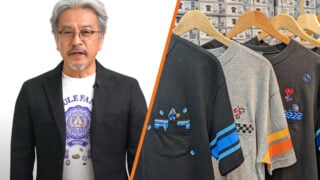
Translation for this feature was provided by CathyCat
You might not have heard of Edit Mode, but if you’re a Nintendo fan, you almost certainly know its designs.
In its most recent Nintendo Direct, producer Eiji Aonuma announced a new Zelda game while wearing an Edit Mode t-shirt (pictured above). Shigeru Miyamoto, the creator of Mario, Pikmin et al, is frequently seen wearing Edit Mode’s designs during interviews and media events.
The small, Kyoto-based fashion house has enjoyed this relationship with Nintendo’s most important creators for more than 20 years, and among Japan-based game fans, Edit Mode is a cult brand.
Its unique, eye-catching designs based on classic retro games – which seem to go out of print as quickly as they arrive – are guaranteed talking points at industry gatherings, as likeminded fans scramble to find out where you got that Corneria Air Force top with the glow in the dark Arwings, or the deep cut Famicom sweater with pixel art lavished on every surface (incidentally, Aonuma’s Nintendo Direct shirt sparked a Reddit investigation to find it).
Edit Mode has dabbled in other historic companies’ classic games, such as Sega for its Get Ready series, but it’s Nintendo where the overwhelming focus of its designs lies. These days, you can even find some Edit Mode t-shirts for sale in Nintendo’s official stores in Tokyo, Kyoto, and Osaka. But if it wasn’t for a chance meeting in the late 1990s, it might not exist at all.

“I used to work in an apparel shop,” explains Edit Mode founder Masaaki Enami in an interview with VGC. “It was like a select shop, where they select items that they think would fit your theme. There are a lot of those kind of stores in Japan, but they had nothing to do with gaming.
“Because it was in Kyoto, we often had customers come in who were working at Nintendo,” he added. “One day, a customer came in wearing a jacket over a t-shirt, but when they removed the jacket, I noticed a large Nintendo logo. I immediately wanted that t-shirt! So I asked the customer if I could have it, and they said they might have some more in their office.
“So I was waiting and looking forward to that person returning to the store, because I was hoping I could get my hands on a Nintendo t-shirt. But when that person returned, they apologised and said, ‘sorry, we only have this one’, and they handed me a polo shirt with a Game Boy logo on it. It wasn’t quite what I was expecting.”
“One day, a customer came in wearing a jacket over a t-shirt, but when they removed the jacket, I noticed a large Nintendo logo. I immediately wanted that t-shirt”
The disappointment spurred Enami into action. While the store he worked at, Kyoto-based ‘Loftman1981’, specialised in vintage clothing, it also dabbled in printing its own t-shirts. So naturally, the young store clerk wondered if he could get permission to create his own Nintendo design.
“The developer said they thought it was an interesting idea, and I assumed that meant it was alright to go ahead,” Enami explained. “I remember it was around the time the clear iMacs were released, because my friend had one, and I asked to use it to work on designs for a Nintendo t-shirt. I also wrote a letter to Nintendo explaining how much I love and admire them, and put this in an envelope together with the first t-shirt I came up with.
“I waited for a long time, but I never received a response. So I decided to call this person at Nintendo directly. They explained that they were a game developer who worked on Mario Kart at that time, and that they weren’t the right person to contact about making a t-shirt. Thankfully, he introduced me to the department in charge of licensing, who gave me for the first time the chance to go to Nintendo and pitch them directly.”
Enami was then introduced to Nintendo’s licensing team, who explained that since only Nintendo had the rights to the Nintendo logo, their t-shirts were used only for events and that he couldn’t sell them. However, the company said it was willing to entertain other ideas for a design, and so the young fashion designer was sent away to come up with a presentation.
Enami was negotiating with Nintendo at a time when its IP and licensing operation was miles apart from the movie-producing, retail juggernaut it is today. Virtually all official t-shirts it produced in 1999 were purely for promotion, such as for attendees at CES and E3, while its staff mostly wore white uniforms or suits.
There was seemingly no structure in place for this sort of deal. Not only had it never put pixel art on an official garment, it hadn’t even put the guidelines in place to tell Enami how to use that pixel art when it was printed onto a t-shirt. Despite Nintendo’s inexperience and stringent restrictions, his persistence would eventually pay off – but it took an incredible two years of back-and-forth.
“Virtually all official t-shirts it produced in 1999 were purely for promotion, such as for attendees at CES and E3, while its staff mostly wore white uniforms or suits.”
“It was around this time that Animal Crossing was releasing for Nintendo 64 in Japan, so they gave me a flyer and said maybe I could make a t-shirt for the game,” Enami said. “But because the series was releasing for the first time, I had no idea if it would be a good or interesting game.
“The next thing that they proposed was a Super Mario Bros. 2D design from the game’s box art, which they said I might be able to use. In those days, when you had licensed materials, generally they would just use the official illustration and stick it on stuff, and I wasn’t very convinced about that.”
One of the reasons the green light process took so long was because Enami needed not just the approval of the licensing department, but also the teams at Nintendo responsible for the specific games. Finally, other departments at the company would also need to have no objections to the design. If just one department said no, he would have to make changes and pitch all over again.

“That took a lot of time,” Enami said. “For example, the Mario Bros. box art design I mentioned earlier, it was just decided that was how Mario was supposed to look. One of my first proposals was actually a pixel art Mario. Nintendo looked at that and said, ‘yes, that is Mario. But it’s also not Mario. Mario has to be like the 2D illustration that we showed you’.
“So I said no, I think that’s different. When we were small, and we played Super Mario Bros. on our TV screen, the pixel Mario is the Mario that we saw… It took a lot of time for the Nintendo people to understand the significance of the pixel art and why I wanted to choose that over the package art.”
Thankfully, one individual Enami encountered at Nintendo understood what had in mind for his t-shirt designs. “During this time, at Nintendo, everyone was wearing a uniform, apart from this one person in my meeting who was wearing casual clothes,” he explained. “This person understood that I didn’t really want to just stick their design on something, and they showed their notebook to everyone, which was full of ideas they were thinking of.
“When we were small, the pixel Mario is the Mario that we saw… It took a lot of time for the Nintendo people to understand the significance of the pixel art and why I wanted to choose that over the package art.”
They said, ‘you can’t use our logo, and you don’t want to use Animal Crossing, but how about you draw out a design and show it to us?’ So, I got another chance. I returned to my friend’s iMac and every night we sat there trying to make designs.”
When Enami brainstormed his ideas for t-shirts using classic pixel art, he discovered another unexpected complication. As has coincidentally become a social media talking point just this week, old televisions used in the 80s and 90s will often display drastically different colours when playing consoles like the NES, which means each player will have a different interpretation of how the games looked back in the day.
“Inside Nintendo, it wasn’t decided who would decide whether the pixel art Mario was the real Mario or not,” Enami explained. “The process was new at this point in time. Similarly, when we printed Mario on a t-shirt, Nintendo wasn’t quite sure who was responsible for deciding what the correct colours were. Even the pixel art had to be the ‘right’ colour! They eventually gave me a little film with a pixel Mario on it, to compare the colours.
“There were no documents yet to judge what was ‘correct’ at the time. Even now, I will always show where I got the original inspiration from for our t-shirts. For example, if I was making a t-shirt based on Balloon Fight, I would stop the game and take a screenshot, and then show Nintendo where I took this in order to ensure that the design was authentic.
“If I use a famous line that a character says, I’ll take a screenshot of that from the TV screen, or maybe take it out of the instruction manual, and include that with my files when I submit the design.”
We asked Enami if, at times, when he was deliberating in a meeting over the correct colour of Mario’s moustache, he thought the entire process was perhaps a bit crazy. “Sometimes,” he replied. “But I have to decide what colours a t-shirt has, right? I was forever holding those Pantone colour strips up to a television to decide which colour would be the closest to Super Mario Bros.”
In the following months, Enami’s concepts were iterated upon as Nintendo provided frequent revisions. Thankfully, a looming anniversary provided the guidance he needed to finalise his concept in a way that also fit within Nintendo’s plans.
“Eventually, I went and brought my ideas over to Nintendo again and we went through the same procedure: ‘you can’t do this, but this might be OK’. Then during another meeting, which took place in 2000, they told me that it happened to be the 20-year anniversary of Donkey Kong the next year.
“So with that hint, we decided to design a t-shirt with that theme, and we started working together properly for the first time. It took us longer than expected to finish it – two years – so the 20th anniversary was already over when we started selling it in 2002! Thankfully, that was the start of everything.”
“The point is not to give up. That is probably the best advice, to never give up, ever. You can always offer something else if the original idea isn’t approved.”
Enami’s first Nintendo t-shirt – the first in the 24-year-old ‘King of Games’ line – was the 20th anniversary Super Mario t-shirt, which went on sale in June 2002. Initially, he sold the design in the apparel store that he was working at. However, a year later, it had sold well enough that he had the confidence to quit his job and establish his own fashion line with a few friends – including the one who had let him use his iMac for the first designs. And thus, Edit Mode was born.
After two years of negotiating with Nintendo, the approval process got easier, Enami said, and his team followed up the Mario t-shirt with designs based on Japanese Famicom cartridges. Eventually, Edit Mode produced designs based on all of Nintendo’s major series, including Zelda, Metroid, Mother, Kirby, Splatoon, Animal Crossing, Star Fox, and more.
“The point is not to give up,” he said. That is probably the best advice [for working with Nintendo]: never give up, ever. You can always offer something else if the original idea isn’t approved.”

Unexpectedly, very soon after Edit Mode’s first t-shirts were released, they started to appear on the backs of Nintendo’s most famous designers, which gave the brand an invaluable boost. You can still find plenty of pictures and videos of Shigeru Miyamoto as far back as 2003 wearing the iconic King of Games Mario Bros. design, which features two green pipes and an array of pixel Mario heads.
“The first time I noticed a developer wearing one of my t-shirts was actually Itoi-san, the creator of Mother,” Enami said. “For his website, he came to interview me about this Kyoto fashion store that was selling Nintendo t-shirts, before I started Edit Mode.
“A lot of people started paying attention to me thanks to that website article and that’s where things really started to take off. At E3 that year, Miyamoto-san was wearing one of my t-shirts during interviews. It was a very good start!”
“I didn’t know it at the time, but in terms of officially licensed t-shirts using pixel art, I was the only one doing this at the time… that’s one of the reasons why developers started wearing them.”
Enami puts the initial popularity of his designs within Nintendo down to the fact that, before he entered his two-year initial negotiations with the company, employees had few options in terms of corporate leisurewear – and none which featured its iconic pixel art designs.
“I didn’t know it at the time, but in terms of officially licensed t-shirts using pixel art, I was the only one doing this at the time, so that meant people started to find out about it, and that’s one of the reasons why developers started wearing them at E3.
“For example, around 2005, the 20-year anniversary of Super Mario Bros. was coming up, and there was quite a lot of marketing on the subway and such, which heavily promoted the pixel art for the first time.
“Generally when they made official announcements at Nintendo, they wear suits. But they didn’t have casual clothes to wear at these kinds of announcements before. We were the only ones making them.”

Today, Enami says the Nintendo approval process still involves a lot of trial and error, but the sheer number of designs Edit Mode has produced over the years is a testament to his persistence and the quality of the company’s creations. Edit Mode t-shirts are full of intricate details and unexpected Easter Eggs, and often come in collector’s packages with bonus items such as badges and stickers.
Edit Mode’s t-shirts are available to buy direct from Japan via its online store, and they’re also available in various Japanese fashion stores, as well as occasionally inside Nintendo’s official shops. Several times a year, it also opens its picturesque Kyoto HQ for shoppers, where they can explore its vast collection of Nintendo memorabilia, alongside its products.
25 years after a chance meeting with a Nintendo developer in Enami’s store, ironically, it’s now the game developer’s employees who often pitch him for designs, and in true spirit, he sticks as tightly to his principles as Nintendo did way back then. “[Developer pitches] have happened, but usually for promotion purposes,” he said. “But my concept is to think first of the players and what they want – that’s how I design my t-shirts and will continue to do so.”
